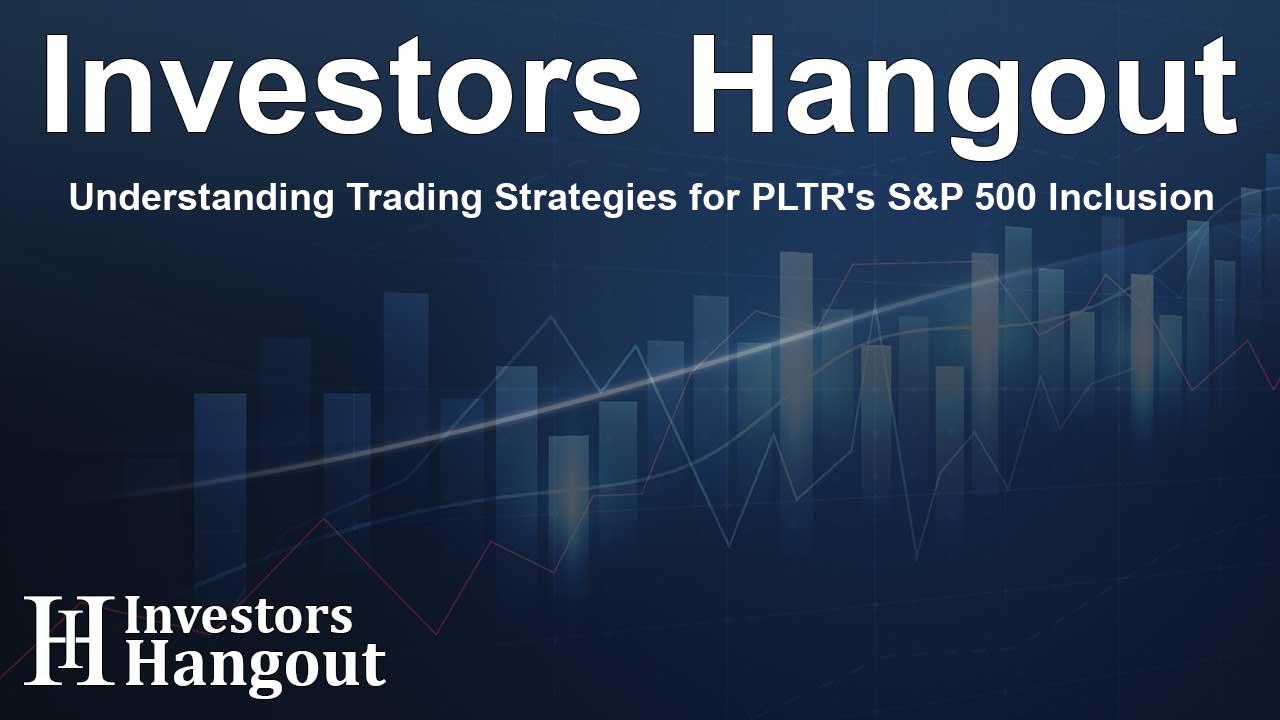Understanding Trading Strategies for PLTR's S&P 500 Inclusion

PLTR’s S&P 500 Debut: What It Means Right Now
Palantir Technologies (PLTR) has drawn a fresh wave of attention after being named to the S&P 500 index. When a stock joins a major benchmark like this, trading tends to heat up quickly. Visibility rises, liquidity shifts, and short-term price moves often follow as investors react to the change.
Why Index Inclusion Sparks Automatic Buying
Because the S&P 500 is widely tracked, index funds and other benchmarked strategies need to buy the new member to keep their portfolios aligned. That mechanical demand now applies to PLTR. This forced rebalancing isn’t unusual—when a company is added, managers purchase shares so their funds match the index’s composition, creating near-term buying pressure.
How the Stock Has Traded Since the News
In the latest session, PLTR is around $34.50. It’s down a bit on the day, but still up roughly 14% since the inclusion announcement. That mix—an initial pop followed by choppy, headline-driven trading—is typical around index changes, when flows and positioning matter as much as fundamentals in the short run.
Next Levels to Watch and a Practical Game Plan
Looking ahead, the key is mapping likely ranges. Using options activity and my “PFP” read—Price action, Flows, and Positioning—the $35 area stands out. The Top Call Strike (TCS) sits there, hinting that upside may be capped for now because there aren’t enough traders positioned to drive a clean breakout. That doesn’t mean PLTR can’t push higher; it just means the path above $35 could be harder without fresh participation.
Support Bands and Where Dip Buyers Might Appear
On the downside, support looks firmer in the $31 to $32.50 zone. If price slips into that range, options traders tend to defend it, which can steady the tape. For investors, that area may offer a more favorable entry, especially if the pullback comes on lighter volume and stalls near those levels.
A Note on September Calls
There’s solid interest in call options expiring in September. If you’re eyeing that trade, patience can help: waiting for a pullback before stepping in often improves price and risk. Entering closer to expiration can also catch the typical lift that sometimes builds as contracts near their final week—provided the stock is behaving constructively.
Bottom Line
Palantir’s S&P 500 inclusion has real, mechanical effects on flows, which can shape the near-term range. Keep an eye on $35 as a potential lid and $31–$32.50 as a support band. Combine that map with ongoing options flow to refine timing. One reader, one note: let the levels do the talking, then act with a plan.
Frequently Asked Questions
What does PLTR’s addition to the S&P 500 actually change?
It boosts visibility and triggers buying from funds that track the index, which can influence near-term demand and price behavior.
How might I approach trading PLTR after the announcement?
Focus on the map: resistance near $35 and support around $31–$32.50. If price pulls back into support, that can be a cleaner spot to consider entries, especially if options flow starts to turn supportive.
Where could price go in the short term?
Volatility is likely. The $35 area may act as a ceiling for now, while the $31–$32.50 range has shown buyers. Moves between those bands can set up tactical trades.
What risks should I keep in mind right now?
Post-inclusion swings can be sharp, and positioning around options levels can change quickly. If those levels break, moves may extend. Size positions accordingly.
How can options flow data help me make decisions?
It reveals where traders are concentrating bets, which can flag likely support, resistance, and potential shifts in momentum. Used with price action, it helps refine timing and manage risk.
About The Author
Contact Henry Turner privately here. Or send an email with ATTN: Henry Turner as the subject to contact@investorshangout.com.
About Investors Hangout
Investors Hangout is a leading online stock forum for financial discussion and learning, offering a wide range of free tools and resources. It draws in traders of all levels, who exchange market knowledge, investigate trading tactics, and keep an eye on industry developments in real time. Featuring financial articles, stock message boards, quotes, charts, company profiles, and live news updates. Through cooperative learning and a wealth of informational resources, it helps users from novices creating their first portfolios to experts honing their techniques. Join Investors Hangout today: https://investorshangout.com/
The content of this article is based on factual, publicly available information and does not represent legal, financial, or investment advice. Investors Hangout does not offer financial advice, and the author is not a licensed financial advisor. Consult a qualified advisor before making any financial or investment decisions based on this article. This article should not be considered advice to purchase, sell, or hold any securities or other investments. If any of the material provided here is inaccurate, please contact us for corrections.
